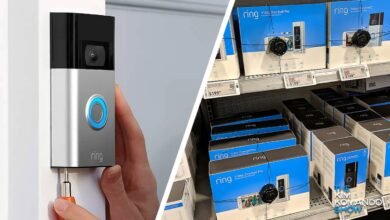IoT SAFE: Improving IoT Security Across Sectors
The Internet of Things (IoT) has exploded in recent years, with billions of devices being connected to the internet each year. These devices, from smart home gadgets to complex industrial machinery, are revolutionizing how we live, work, and interact with technology.

The Internet of Things (IoT) has exploded in recent years, with billions of devices being connected to the internet each year. These devices, from smart home gadgets to complex industrial machinery, are revolutionizing how we live, work, and interact with technology. However, with this incredible growth comes a serious challenge: security. IoT devices, by their very nature, are highly vulnerable to cyber threats. To address these risks, the GSMA (Global System for Mobile Communications Association) introduced IoT SAFE (IoT SIM Applet For Secure End-2-End Communication), a global standard aimed at improving IoT device security. By embedding security protocols directly into the SIM card, IoT SAFE offers a unique and robust approach to protecting IoT devices across industries.
What Is IoT SAFE?
The GSMA is in charge of the security initiative known as IoT SAFE, which aims to use the existing SIM card to provide a universal security layer for IoT devices. Since SIM cards are already a secure component in mobile networks globally, IoT SAFE leverages this trusted element to secure IoT communications. With IoT SAFE, a SIM card becomes more than a connectivity enabler—it transforms into a security hub within each IoT device, facilitating secure authentication and data encryption. This added layer of security helps prevent unauthorized access, data breaches, and cyberattacks, addressing the unique security needs of diverse IoT applications.
Why IoT SAFE Matters
IoT devices typically lack built-in security measures, making them easy targets for hackers. This risk is amplified in industries where IoT devices manage critical operations, like healthcare, transportation, and industrial manufacturing. By implementing IoT SAFE, organizations can achieve a standardized security protocol that ensures devices across sectors adhere to consistent security requirements. This standardization not only protects sensitive data but also strengthens trust among users, operators, and service providers.
Key Benefits of IoT SAFE
The implementation of IoT SAFE brings several critical benefits:
- Unified Security Standard
- IoT SAFE provides a consistent, standardized security protocol across IoT devices. By leveraging the SIM as a secure element, it eliminates inconsistencies in security practices, ensuring that every device in a network follows the same rigorous standards.
- Improved Data Privacy
- Data breaches are a significant concern in IoT, especially with sensitive information such as healthcare records or industrial controls at stake. IoT SAFE protects data by encrypting it during transfer between devices and cloud platforms, reducing the risk of interception or unauthorized access.
- Scalability for Large-Scale IoT Networks
- IoT SAFE is designed to be highly scalable, making it suitable for massive networks like smart cities or healthcare facilities where hundreds or even thousands of devices are connected and need to communicate securely with cloud-based systems.
- Simplified Device Management
- For organizations, managing multiple security standards across devices is complex and resource-intensive. IoT SAFE simplifies this process by providing a universal security layer embedded in the SIM, allowing operators to focus on innovative applications rather than security concerns.
How IoT SAFE Enhances Security in Different Sectors
IoT SAFE can play a pivotal role in securing IoT applications across various industries. Here’s how it supports several critical sectors:
1. Healthcare
The healthcare sector increasingly relies on IoT devices, from wearable health trackers to remote patient monitoring systems. These devices generate and transmit sensitive health data, which, if compromised, can lead to privacy breaches and regulatory issues. IoT SAFE adds a robust security layer to these devices, ensuring that only authenticated users can access sensitive information. By encrypting data end-to-end, IoT SAFE helps healthcare providers maintain patient confidentiality and comply with strict data privacy regulations.
2. Industrial IoT
In industrial settings, IoT devices are used to monitor and control equipment, automate processes, and ensure worker safety. Cybersecurity threats targeting these devices could disrupt operations, lead to equipment damage, or even pose safety risks. IoT SAFE secures these devices by establishing secure communication channels, reducing the risk of unauthorized access or manipulation. With IoT SAFE, industrial facilities can maintain a higher level of operational resilience, knowing their equipment is protected from malicious interference.
3. Smart Cities
Smart cities rely on a web of IoT devices to manage public utilities, traffic flow, and public safety systems. These devices play a crucial role in daily urban operations, and a security breach could have far-reaching consequences, such as power outages or compromised traffic systems. IoT SAFE ensures that every device in a smart city ecosystem adheres to secure communication protocols, protecting critical infrastructure from potential cyberattacks. This standardization helps build a reliable foundation for smart city initiatives, providing residents with safer and more resilient urban services.
4. Automotive
Connected vehicles, from cars to public transit, rely on IoT for functions like navigation, diagnostics, and autonomous driving features. These systems exchange large amounts of data with cloud services, creating potential vulnerabilities. IoT SAFE secures this data exchange, ensuring that only verified users and devices can access or control vehicle data. This added security is essential to protect both drivers and passengers, preventing unauthorized access to vehicle functions.
5. Energy and Utilities
IoT has transformed the energy sector by enabling smart grids, automated meters, and optimized distribution networks. However, a cyberattack on these systems could lead to widespread outages or utility disruptions. IoT SAFE protects these critical infrastructure elements by securing device communication within the energy ecosystem. By ensuring data integrity and secure access to systems, IoT SAFE helps maintain reliable service delivery and protects public access to essential utilities.
Key Components of IoT SAFE
IoT SAFE relies on several key components that make it effective in securing IoT devices:
- SIM-Based Secure Element
The SIM card serves as a secure element in each IoT device, housing cryptographic keys and establishing a trusted environment. This SIM-based approach leverages decades of security advancements in mobile technology, providing a robust foundation for IoT security. - Mutual Authentication
IoT SAFE employs mutual authentication, where both the device and the cloud verify each other’s identity before any data is exchanged. This prevents impersonation attacks and ensures that only trusted devices can communicate within the network. - Data Encryption
IoT SAFE supports end-to-end encryption, ensuring that all data between IoT devices and cloud systems remains confidential and secure from eavesdropping. - Seamless Integration with Cloud Platforms
IoT SAFE works seamlessly with major cloud platforms, allowing businesses to implement secure IoT communications without requiring significant changes to their existing infrastructure.
Challenges and Considerations in Implementing IoT SAFE
While IoT SAFE offers a powerful solution for securing IoT devices, there are some challenges and considerations to address for successful implementation:
- Compatibility with Non-SIM Devices
Some IoT devices do not use SIM cards, which limits the reach of IoT SAFE. For these devices, alternative security solutions or adaptations may be required to provide similar levels of protection. - Cost of Upgrading Infrastructure
For organizations with established IoT systems, implementing IoT SAFE may require upgrades to SIM-enabled devices, leading to additional costs. Organizations must assess the cost-benefit of implementing IoT SAFE for their unique needs. - Global Adoption
Widespread adoption is necessary to make IoT SAFE a truly universal standard. Regional differences in regulatory requirements and security practices could hinder seamless integration across global IoT networks.
The Future of IoT Security with IoT SAFE
As the number of IoT devices continues to grow, so does the need for a reliable, standardized approach to securing them. IoT SAFE presents a future where IoT devices across all sectors can operate with a consistent security layer, simplifying compliance and reducing the risk of cyber threats. By leveraging the ubiquitous SIM card, IoT SAFE offers a scalable, adaptable solution that can grow alongside the IoT ecosystem, protecting businesses and consumers alike.
Conclusion
IoT SAFE is a forward-thinking initiative that addresses a critical need in the fast-growing IoT landscape. By embedding security directly into the SIM card, IoT SAFE enables a standardized, secure environment for IoT devices across industries. From healthcare to energy, this security solution offers a way to protect sensitive data, ensure operational continuity, and build user trust. As IoT continues to transform industries and lives, the importance of secure, reliable communication cannot be overstated. IoT SAFE is helping lay the foundation for a more secure and resilient IoT future, ensuring that the benefits of connected devices can be enjoyed without compromising safety or privacy.











